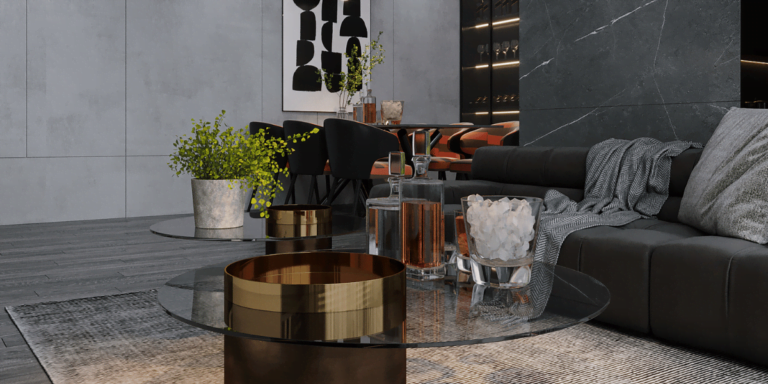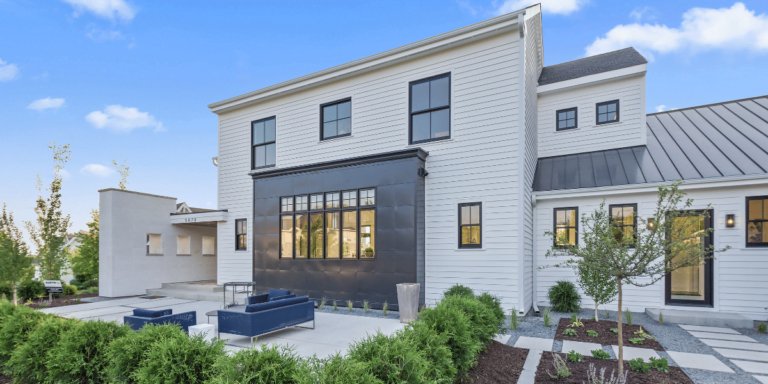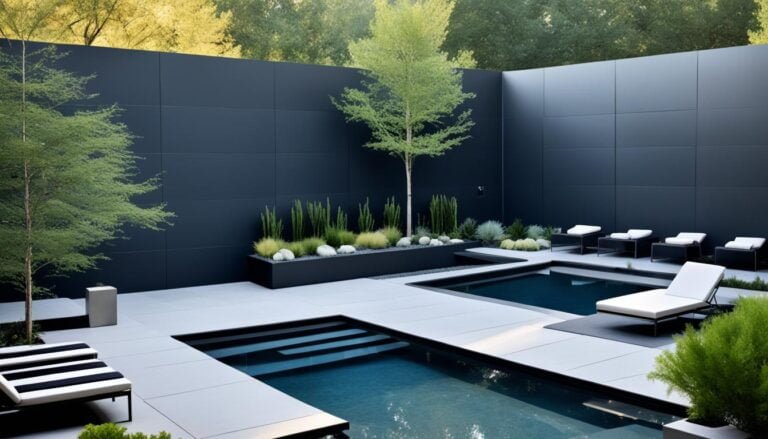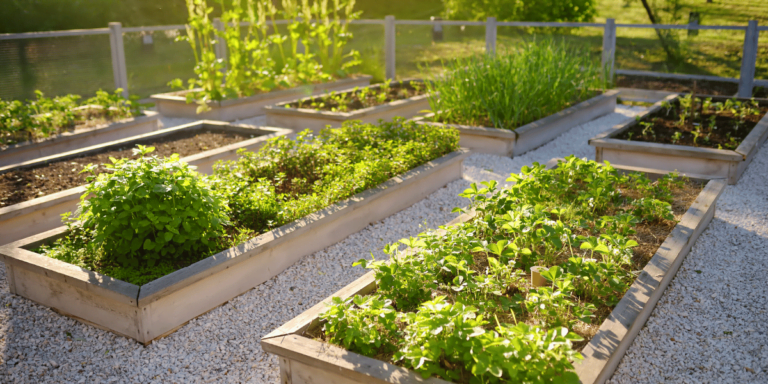Designing mindfulness garden spaces are a growing trend in urban gardening, offering a serene and tranquil oasis for mental wellbeing. These gardens are designed to promote relaxation and create a sense of peace, helping individuals to disconnect from the stresses of modern living and reconnect with nature. Incorporating eco-friendly practices such as sustainable gardening techniques, innovative water conservation methods, and renewable energy sources can enhance the overall benefits of these garden spaces. Additionally, creating wildlife habitat, implementing high-tech smart gardening tools, utilizing space-efficient vertical gardening, and adopting urban permaculture practices can further optimize the positive impact of mindfulness gardens. Furthermore, incorporating indoor hydroponic systems, organic composting methods, green roof ecosystems, and contemporary garden artistry can add unique elements to these spaces. Taking inspiration from biophilic design principles and integrating smart garden automation can provide a holistic approach to creating and maintaining mindfulness garden spaces. Finally, considering eco-friendly garden renovation techniques can transform existing outdoor spaces into nurturing environments for mental wellbeing.
Key Takeaways:
- Designing Mindfulness garden spaces offer a serene and tranquil oasis for mental wellbeing in urban environments.
- Eco-friendly practices such as sustainable gardening and renewable energy sources enhance the benefits of these garden spaces.
- Creating wildlife habitat and utilizing smart gardening tools further optimize the positive impact of designing mindfulness gardens.
- Integrating indoor hydroponic systems, organic composting, and contemporary garden artistry adds unique elements to these spaces.
- Considering eco-friendly garden renovation techniques can transform existing outdoor spaces into nurturing environments for mental wellbeing.
Incorporating Nature-inspired Design Elements
When designing a mindfulness garden space for mental wellbeing, it is important to incorporate nature-inspired design elements. Creating a harmonious blend between the natural environment and the garden’s layout helps to evoke a sense of tranquility and peace. Whether you prefer an intimate and enclosed space or an open and expansive one, the arrangement of the garden plays a crucial role in creating the desired atmosphere.
Consider the sights, smells, and feelings that evoke a sense of wellbeing when you visit places that you love. These sensory experiences can guide your choices in incorporating natural elements into your garden design. The presence of water features, such as a bubbling stream or a reflective pond, can have a deeply relaxing effect on individuals, providing a soothing soundscape and visual delight.
Including objects of concentration, such as sculptures, rocks, or sea shells, can create a focal point for meditation and reflection. These elements draw the attention and encourage a sense of mindfulness and presence in the garden space.
Plants, with their infinite variations of shapes, forms, and movements, are essential in creating a sense of harmony and tranquility. Choose a diverse range of plants that complement each other and provide visual interest throughout the seasons. Additionally, consider selecting a color palette that includes cool-toned whites, pinks, blues, and purples, as these colors are known to create a calming and relaxing atmosphere.
To further enhance the sensory experience, incorporate scents into your garden. Fragrant plants such as roses or jasmine can fill the air with delightful aromas, adding an extra dimension to your mindfulness practice.
Creating Seclusion and a Sense of Journey
When designing a mindfulness garden space, it’s important to consider creating seclusion and a sense of journey within the design. These elements can enhance the feeling of wellbeing and provide a truly immersive experience.
Dividing the Garden into Secluded Spaces
One way to create seclusion is by dividing the garden into separate areas, each with its own purpose and atmosphere. This allows for a more intimate and private experience. Hedges, shrubs, walls, fences, or trellises can be used to create physical boundaries and provide a sense of enclosure. These natural or man-made barriers not only offer privacy but also contribute to the aesthetic appeal of the space.
Designing a Wellbeing Space
In addition to secluded spaces, consider creating a designated area specifically for relaxation and restoration. This wellbeing space can incorporate various elements that promote peace and tranquility.
A sunken seating area, for example, adds depth and interest to the overall design and creates a sense of journey. Steps leading to this area can enhance the visual appeal and provide a unique experience. When choosing seating, prioritize comfort to encourage long periods of relaxation. Consider placing shrubs or hedging behind the seating area for a cozy and protected feeling.
Attention-Grabbing Features Of Designing Mindfulness Garden Space
To further enhance the sense of journey and wellbeing, incorporate attention-grabbing features in your garden design. Water features, such as fountains or small ponds, can provide a focal point for the mind, create a soothing ambiance, and attract wildlife. Objects of concentration, such as sculptures or unique plants, can also spark curiosity and draw attention.
Fragrance and Color Psychology
The use of fragrance in the garden can greatly enhance the sensory experience. Choose scented plants, like roses or lavender, to fill the air with a pleasant aroma. The fragrance of these plants can have calming effects on the mind and promote relaxation.
The use of color is also important for creating a calming atmosphere. Green, being naturally relaxing and calming, should be a dominant color in the garden. Consider incorporating different shades of green, as well as other soothing colors such as blues and purples.
Designing Different Garden Themes
Depending on personal preferences, the garden can be designed to evoke different natural environments, each with its own unique atmosphere. Whether it’s a serene forest glade, a vibrant lush jungle, a peaceful English meadow, or a tranquil Mediterranean grove, the choice of theme can contribute to the overall experience and sense of journey in the garden.
| Garden Theme | Atmosphere |
|---|---|
| Forest Glade | Serene and peaceful |
| Lush Jungle | Vibrant and exotic |
| English Meadow | Charming and idyllic |
| Mediterranean Grove | Relaxed and sun-soaked |
The choice of garden theme ultimately depends on personal preference and the desired atmosphere for the space.
By creating seclusion and a sense of journey within the design, a mindfulness garden space can offer a truly immersive and transformative experience. Whether it’s through secluded spaces, attention-grabbing features, or carefully chosen scents and colors, these elements contribute to the overall sense of wellbeing and create a tranquil escape.
Encouraging Wildlife and Nurturing the Environment
Mindfulness garden spaces can also be designed to benefit wildlife and nurture the environment. By incorporating wildlife-friendly gardening practices, such as providing food and habitat for bees and butterflies, the garden can become a thriving ecosystem. Using recycled materials, practicing sustainable planting methods, and creating wildlife homes contribute to the overall eco-friendliness of the space.
In addition to sustainability, adding exotic garden elements can create a sense of escape and transport individuals to a different environment. By incorporating themed materials, colors, and textures inspired by destinations around the world, the garden becomes a true naturescape and an outdoor retreat.
One of the key aspects of wildlife-friendly gardening is creating sensory experiences for both humans and animals. Water features such as ponds and trickling streams not only add beauty but also provide a source of hydration and habitat for various wildlife species. These features create a tranquil atmosphere and encourage a deeper connection with nature.
To attract a wide range of wildlife, it’s essential to prioritize plant diversity. By including a variety of flowers, shrubs, and trees, the garden becomes an oasis for pollinators, birds, and other small animals. Vertical gardening techniques, such as colorful hanging baskets and raised planters, maximize the use of space while adding visual interest and enhancing the garden’s appeal to wildlife.
| Benefits of Encouraging Wildlife | Methods |
|---|---|
| Creates a balanced ecosystem | Use native plants, provide food sources, and establish wildlife habitats |
| Promotes natural pest control | Integrate beneficial insects, birds, and bats into the garden ecosystem |
| Enhances biodiversity | Plant a variety of species to support a wide range of organisms |
| Contributes to environmental conservation | Reduce water consumption, minimize chemical use, and create sustainable gardening practices |
To further enrich the garden’s eco-conscious practices, consider incorporating creeping vines to provide cover for wildlife and add vertical interest. Eco-conscious practices, such as using organic fertilizers and avoiding harmful pesticides, can help maintain a healthy garden ecosystem.
By adopting these practices and embracing the harmony between nature and design, mindfulness garden spaces can become not only a sanctuary for mental wellbeing but also a haven for wildlife and a symbol of our commitment to environmental stewardship.
Maximizing Small Spaces and Creating a Tranquil Escape
Mindfulness garden spaces are not limited to sprawling gardens and can be adapted to smaller spaces such as balconies and terraces. Design versatility is key in maximizing these areas and creating a tranquil escape.
Incorporating split-level designs can add depth and structure, creating secluded spaces for relaxation. Tall shrubs or hedging can enhance the sense of seclusion in these areas.
Porcelain paving is an excellent choice for creating distinct zones and seamlessly connecting the indoor and outdoor spaces.
Zen gardens, achieved through careful placement of rocks, sand, planting, and natural elements, provide a meditative setting.
| Feature | Benefits |
|---|---|
| Bamboo screens | Offer privacy and block out noise, enhancing the serenity of the space |
| Layering | Outdoor space with a variety of textures, colors, and scents create a more immersive experience |
| Water features or ponds | Add a therapeutic quality to the space while increasing the variety of wildlife |
| Vertical gardening techniques | Maximize vertical space, allowing for a lush and tranquil escape even in limited spaces |
By incorporating compact plantings, you can make the most of the available area and create a vibrant and beautiful garden even in limited space.
With the right design principles and thoughtful consideration of elements like texture, color, scent, and sound, small spaces can be transformed into serene and inviting mindfulness garden spaces.
Conclusion
Designing Mindfulness garden spaces have emerged as transformative sanctuaries in the midst of bustling urban environments, offering a haven for enhancing mental wellbeing. These serene and tranquil oases provide individuals with an opportunity to disconnect from the stresses of modern life and reconnect with nature, fostering a sense of calm and harmony.
By embracing eco-friendly design principles, such as sustainable gardening techniques, water conservation practices, and renewable energy sources, mindfulness gardens contribute to a greener and more sustainable future. These spaces also serve as vital wildlife habitats, promoting biodiversity and nurturing local ecosystems.
The integration of smart gardening tools and vertical gardening practices further optimizes the benefits of mindfulness gardens, allowing for space-efficient cultivation and the efficient use of resources. The adoption of permaculture methods, hydroponic systems, and organic composting techniques enhance the garden’s self-sustainability and reduce environmental impact.
By embracing biophilic design principles and incorporating smart garden automation, these spaces offer a holistic experience, engaging all the senses and deepening the connection with nature. The incorporation of contemporary garden artistry and the utilization of green roof ecosystems add unique and visually stunning elements to the mindfulness garden.
Garden renovation techniques provide an opportunity to transform existing outdoor spaces into rejuvenating environments for mental wellbeing, breathing new life into neglected areas and reviving their potential to uplift and inspire. By prioritizing mental health and incorporating the healing power of nature into our everyday lives, mindfulness garden spaces have the ability to profoundly impact our overall wellness and happiness, allowing us to find tranquility in the midst of the urban chaos.
FAQ
What are designing mindfulness garden spaces?
Designing mindfulness garden spaces are urban gardens designed to promote relaxation and mental wellbeing by reconnecting individuals with nature and providing a serene oasis in the midst of urban environments.
How can eco-friendly practices enhance the benefits of mindfulness gardens?
Incorporating sustainable gardening techniques, innovative water conservation methods, and renewable energy sources in mindfulness gardens can contribute to a greener and more sustainable future while optimizing their benefits.
What are some design elements to consider when creating a mindfulness garden space?
Nature-inspired design elements such as the arrangement of the garden, water features, objects of concentration, plants, color palette, and scents can all contribute to the overall tranquility and relaxation of the space.
How can seclusion and a sense of journey be created in a mindfulness garden?
Seclusion can be achieved by incorporating hedges, shrubs, walls, fences, or trellises, while a sense of journey can be created through the variation of paths and the use of steps leading to different areas of the garden.
How can mindfulness gardens benefit wildlife and the environment?
By implementing wildlife-friendly gardening practices and creating wildlife habitats, mindfulness gardens can become thriving ecosystems that support biodiversity and contribute to environmental stewardship.
How can mindfulness garden spaces be designed in smaller areas such as balconies and terraces?
Design versatility is key in maximizing smaller spaces, and elements such as split-level designs, smart use of plants and natural elements, porcelain paving, Zen gardens, and vertical gardening techniques can all contribute to creating a tranquil escape.
















